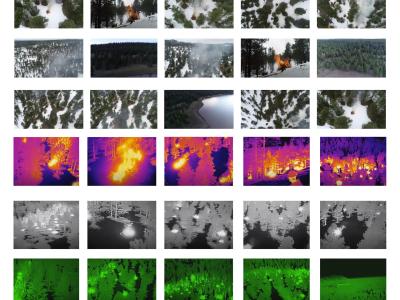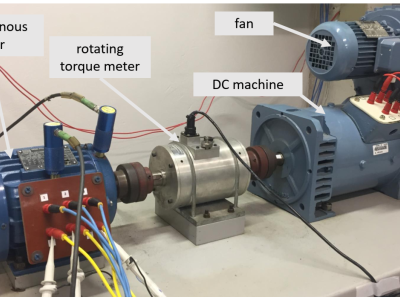fluentFluid

- Citation Author(s):
- Submitted by:
- Kuijun Wu
- Last updated:
- DOI:
- 10.21227/b7ss-kd34
 6 views
6 views
- Categories:
- Keywords:
Abstract
The rapid diffusion and steep concentration gradients of ship exhaust plumes create substantial challenges in velocity field estimation and quantification. To address this limitation, this study develops FluentFluid, the first large-scale optical flow dataset specifically designed for plume motion analysis, as a standardized training benchmark. A novel deep optical flow network architecture guided by grayscale attention mechanisms is proposed. The architecture adopts a dual enhancement strategy through Effective Grayscale Pixels (EGPs) and Grayscale Attention Weights. This design enables targeted focus on regions with strong gas concentration gradients. Building upon the EGP concept, we introduce the Grayscale Endpoint Error metric and establish a unified evaluation framework for ship exhaust plume monitoring. Experimental results show that the grayscale attention-enhanced RAFT_GA model achieves 13.6% higher optical flow prediction accuracy in EGP regions compared with baseline models, with 74.14% improvement over conventional approaches. Field validation demonstrates 87.45% phase accuracy in real-world scenarios, confirming the attention mechanism’s effectiveness in gas motion field prediction. The proposed framework provides critical insights for motion analysis in ultraviolet/infrared spectral domains, particularly under nighttime or high-luminance conditions.
Instructions:
To establish comprehensive training data for fluid optical flow estimation, we developed a simulated ship emission dataset called FluentFluid. This dataset was generated through computational fluid dynamics simulations using ANSYS Fluent software, with focus on ship exhaust plume modeling. The synthesis pipeline began with the construction of a physical model of ship stack exhaust systems, followed by fluid motion simulation under controlled parametric variations, including exit velocity, stack position, turbulence intensity, and ambient wind conditions. Spatial discretization was implemented on a 480×360 computational grid. Selected subsets were further integrated with precropped 480×360 UV sky background images to emulate realistic illumination changes induced by vessel motion. Notably, fluid dynamics are governed by Navier–Stokes equations, yielding 18,068 image pairs with corresponding optical flow ground truth. Dataset scaling is theoretically unlimited through parametric adjustments and can be extended as required. To enhance model generalizability while suppressing overfitting, we applied Gaussian noise injection, adaptive grayscale transformation, and histogram-based contrast enhancement during the data augmentation phase.
Uploading large datasets is a very difficult task. If you need a complete dataset and have valid reasons, please contact me through my email: wukuijun@ytu.edu.cn







